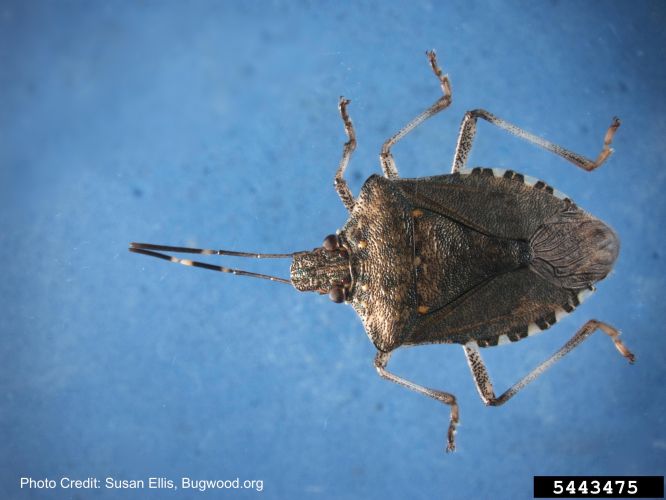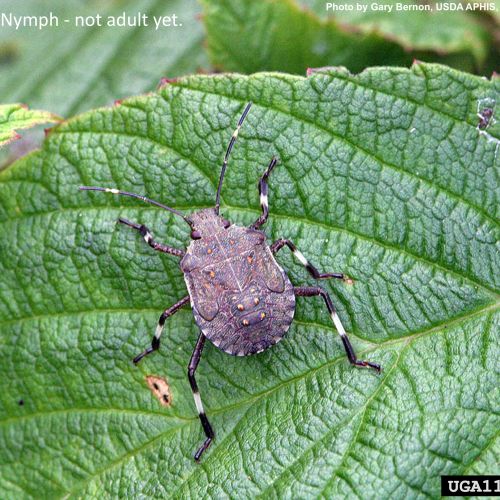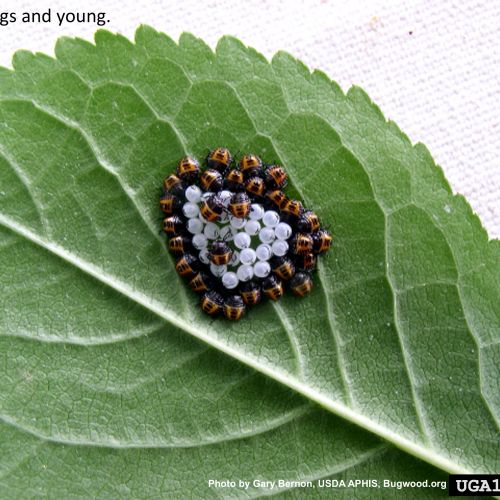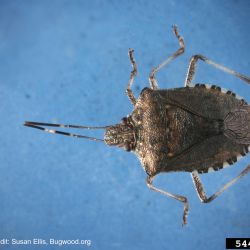
Priority: Prevent
General: Shield shaped insect that looks very similar to insects from BC but it is invasive.
Size: Shield shaped insect that is about the size of a dime.
Colour: The adult is a marbled brown colour. It has alternating brown and white markings on the edge of its back. It has white bands on the antennae. The antennae are primarily dark brown except for the white bands.
Special Features: Before they are fully mature, the younger stages are bright orange, red, black or brown. They develop and have a pear shape with white markings on the legs and antennae.
Rough Stink bug, Common Brown Stink bug, western conifer seed bug
Where did it come from? It is a native pest in Asia. It was first found in North America in Pennsylvania in 2001
Where does it live here? It was detected in BC in 2015. It is present in the Fraser Valley, Vancouver, Vancouver Island and Okanagan Valley including Kelowna. It lives on over 100 different host plants including tree fruits, berries, grapes, vegetables and ornamental plants. Ornamental hosts include tree of heaven, English holly, buckthorn (all invasive), boxelder, catalpa, maple and white ash.
Reproduction: Eggs are white or light green. They are laid in clusters of 20-30cm under leaves. One egg measures about 1.6 x 1.3mm. One female can lay over 400 eggs in a lifetime.
When does it reproduce & mature? Adults overwinter in a sleeplike state. When it emerges in the spring, it starts to mate in about 2 weeks. Eggs hatch in 4-5 days and mature to adults in about 4-5 weeks depending on temperature.
Spreads By: It can be spread by vehicles, shipping containers, wood, packing material and cargo.
Species Type: Insect
- BMSB in both adult and young stages feed on fruit & vegetables. They damage them by puncturing the flesh with their mouth parts. It results in bruising and dead areas on the fruit and plants.
- BMSB feeds on over 100 different plants. In the mid-US states, it caused a loss of $37 million US dollars to the apple industry alone.
- If BMSB adults are crushed during wine-making process, it can taint the taste of wine.
BMSB are attracted to homes to find overwintering spots. Large numbers can cause homeowners grief because they interfere with your living space crawling on walls, porches and decks.
- REPORT all sightings. Send photographs of suspected samples to BC Ministry of Agriculture. Contact AgriServiceBC at 1-888-221-7141 or online here.
- Check all plants, soil and product packaging for invasive hitchhikers especially insects.
- Contact LRISS for assistance.
Photo Gallery



